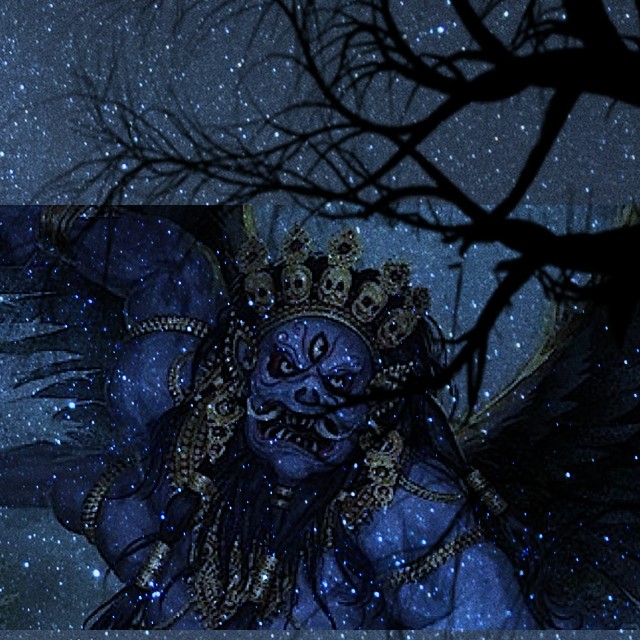A Yagna performed by Parasara against Rakshasas
In this post, we try to understand the significance of the Yajna performed by Parasara against Rakshasas. Rishi Parasara (Parashar) is the father of the famous Vyasa. Parashar’s grandfather is none other than Vasishta, one among the seven Sapta Rishis. Vasishta brought up Parasara. Parasara, as a young man, came to know the cause of his father’s death. His father had died before Parasara’s birth because of a Rakshasa, a class of being. Firstly, young Parasara was well versed in the art of Yagna. Secondly, he wanted to annihilate the Rakshasas, in revenge. Therefore, he began a Yajna. Using the power of Mantras, he drew Rakshasas, one by one. They fell helplessly into the Yajna fire.

Vasishta realized the intention of Parasara and hurried to stop the Yagna against Rakshasas. In addition, Pulastya, another of the seven Sapta Rishis also arrived there. They both explained to Parasara that an entire clan should not bear the punishment for the bad deed of one among the clan. Immediately, Parasara desisted from the Yagna out of respect for these elders. He also dropped his revengeful attitude. Consequently, Pulastya blessed Parasara with special powers. Parasara gained deep insights into incidents from past eras, and he developed intuitive abilities. He composed Vishnu Purana from these insights. Vyasa borrowed the format of this Purana for his eighteen important Purana texts.
What more can we learn about the nature of Rakshasas from this incident?
Who are Rakshasas?
Rakshasa beings arose from the breath of Brahma, the creator, when Tamas or inertia enveloped him. These fierce beings began to chase Brahma as soon as they came into existence. Brahma called out to Hari, the protector, for help. He said “Raksha Mam or protect me”. Because of these words, these beings got the name Rakshasas.
Sorcery and Rakshasa
Let us look back into the incidence related to Rakshasas and Parasara. Parasara uttered specific mantras to draw Rakshasas to the Yagna. These mantras are a part of the eighty seventh Suktam or Verse of the tenth Mandala of the Rig Veda. The mantras refer to Rakshasa as Yatudana (sorcerers). Weapons cannot pierce and kill them. They can appear and disappear at will to create havoc. Only fire can destroy them.
Rakshasas appear in several Purana stories. Besides, they feature prominently in Ithihasa texts. For example, Ramayana is about the enmity of Ravana, the king of Rakshasas towards Sri Rama. Firstly, incidents in the Ramayana illustrate the skill of Rakshasa beings in performing sorcery. Secondly, they change their appearance at will. Thirdly, the power of a Rakshasa increases in the dark.
The Rakshasa metaphor and Society
Puranas convey subtle ideas about reality in the form of stories. For example, the Yaksha principle refers to an aspect of collective consciousness. Yakshas represent power structures of cities and towns. Similarly, the Rakshasa principle refers to violence, deception, and destruction.
Rakshasas and Asuras are related principles. Asuras disrupt the rhythm which leads existence towards expansion. Rakshasas bring fear psychosis into this disruption. In addition, Rakshasas prefer darkness for engaging in nefarious activities. Gang violence is an example of the interplay between Rakshasa and Asura energy.
Similarly, Rakshasas and Yakshas are siblings. Yakshas are associated with power structures in towns and cities. International trafficking in drugs, antiques and human beings thrives through favors gained from powerful politicians and government officials. In addition, trafficking takes place surreptitiously, never in the open. Here we find prominent signatures of the Rakshasas who survive in darkness. In the past, Kings and administrators supplemented their efforts to curtail violence in society through the performance of Yagnas. Parasara attempted to curtail the power of Rakshasas by performing one such Yagna. There are similar Yagnas to curtail the dominance of Asuras and the others.